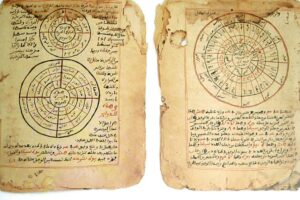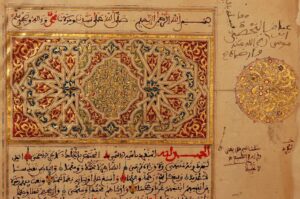Timbuktu Manuscripts
Timbuktu, the fabled city nestled in the heart of Mali, stands as a symbol of Africa’s rich historical tapestry. Beyond its golden age as a bustling trade center, Timbuktu holds an extraordinary treasure trove – thousands of ancient manuscripts that whisper tales of intellectual brilliance, cultural exchange, and the pursuit of knowledge. In this article, we embark on a journey through time, exploring the significance of Timbuktu’s manuscripts, their diverse subjects, preservation challenges, and ongoing efforts to safeguard these invaluable artifacts.
Historical Importance of Timbuktu:
Timbuktu’s rise to prominence traces back to the Mali Empire between the 13th and 16th centuries. As a vital nexus for trade, culture, and Islamic scholarship, the city drew scholars, traders, and travelers from across Africa and the Arab world. At the zenith of its influence, Timbuktu evolved into an intellectual epicenter, fostering a vibrant academic environment.
The Manuscripts – A Glimpse into Timbuktu’s Intellectual Legacy:
At the heart of Timbuktu’s legacy lies its collection of ancient manuscripts, handwritten documents that cover an impressive array of subjects. From astronomy, mathematics, medicine, literature, theology to law, these manuscripts serve as portals to the intellectual pursuits of West Africa’s medieval period.
Diversity in Scripts and Languages:
Timbuktu’s manuscripts are not confined to a single script; rather, they showcase the linguistic diversity of the region. While many are penned in Arabic, the lingua franca of Islamic scholarship, others are written in local African languages. This diversity underscores the inclusivity of Timbuktu’s intellectual landscape, embracing a range of linguistic traditions.

Preservation of Knowledge:
These manuscripts are more than ink on parchment; they are vessels of knowledge, preserving the intellectual achievements of West Africa’s bygone era. Families in Timbuktu have safeguarded these treasures, passing them down through generations, a testament to the cultural importance attached to these documents.
Islamic Scholarship in Focus:
Islamic teachings permeate many of the manuscripts, reflecting Timbuktu’s position as a center of Islamic scholarship. The documents delve into theological discussions, legal interpretations, and various facets of Islamic knowledge. They provide insights into the intersection of faith and intellect that characterized Timbuktu’s intellectual pursuits.
 Challenges to Preservation:
Challenges to Preservation:
While these manuscripts offer a window into Timbuktu’s past, they have faced myriad threats over the centuries. Factors like climate, neglect, and political instability have jeopardized their preservation. The precarious condition of the manuscripts prompted a call to action to safeguard these invaluable artifacts for future generations.
Preservation Efforts and Initiatives:
Recognizing the urgency of preserving Timbuktu’s manuscripts, various initiatives and organizations have stepped forward. The Ahmed Baba Institute of Higher Learning and Islamic Research has played a pivotal role in the preservation and digitization of these ancient documents. These efforts aim not only to conserve the manuscripts but also to make them accessible to a global audience.
Digitization – A Modern Approach to Preservation:
In the digital age, digitization has emerged as a powerful tool for preserving cultural heritage. The process involves converting physical manuscripts into digital formats, ensuring their longevity and accessibility. Digitization not only protects the manuscripts from physical deterioration but also opens avenues for scholarly research and broader public engagement.
 UNESCO Recognition and World Heritage Status:
UNESCO Recognition and World Heritage Status:
Timbuktu’s cultural heritage, including its manuscripts, has garnered international recognition. In 1988, UNESCO designated the city and its historical monuments as a World Heritage Site. This acknowledgment underscores the global significance of Timbuktu’s intellectual and cultural contributions.
Conclusion:
Timbuktu’s manuscripts stand as guardians of an era when the city flourished as a beacon of learning and exchange. Through the careful preservation of these manuscripts, we not only honor Timbuktu’s storied past but also celebrate Africa’s enduring legacy of intellectual pursuit. As ongoing efforts continue to safeguard these ancient treasures, Timbuktu’s manuscripts serve as a testament to the resilience of knowledge and the timeless quest for understanding that transcends borders and generations.

